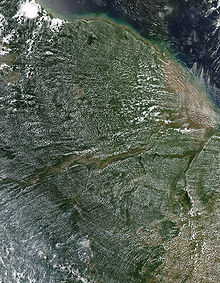**Transpiration Process and Regulation:**
– Water absorbed by roots is lost through transpiration and guttation.
– Stomata regulate transpiration by adjusting aperture.
– Cohesion-tension theory explains water movement through xylem.
– Plants control transpiration rate based on environmental factors.
– Soil conditions and pathogens impact water absorption by roots.
**Factors Affecting Transpiration:**
– Temperature, humidity, wind, and light intensity influence transpiration rate.
– More leaves and larger leaf surfaces result in greater water loss.
– Cuticles reduce evaporation except through stomata.
– Soil moisture affects stomatal opening and transpiration rate.
– Soil salinity can lead to stomatal closure and reduced transpiration rates.
**Cavitation and Water Uptake:**
– Cavitation occurs when xylem is filled with water vapor instead of water.
– Plants must continuously uptake water to avoid cavitation blockages.
– Root pressure can remove cavitation blockages.
– Magnetic resonance imaging monitors xylem status during cavitation.
– Water with mineral nutrients is absorbed into roots by osmosis.
**Effects of Transpiration on Plants and Environment:**
– Transpiration helps cool plants through evaporative cooling.
– Green vegetation moderates climate and supports climate stabilization.
– Urban heat island effects are linked to vegetation loss.
– Contributes to cloud formation, influences local and global climates.
– Essential for maintaining turgidity in cells and supporting ecosystem functioning.
**Research and Innovations in Transpiration:**
– Studies on stomatal conductance and modeling transpiration processes.
– Development of drought-resistant crops and innovations in irrigation technologies.
– Use of isotopic techniques in transpiration research.
– Understanding transpirational cooling aids in mitigating climate change.
– Xerophytes adapt to water deficiencies by altering leaf surface area.
Transpiration is the process of water movement through a plant and its evaporation from aerial parts, such as leaves, stems and flowers. It is a passive process that requires no energy expense by the plant. Transpiration also cools plants, changes osmotic pressure of cells, and enables mass flow of mineral nutrients. When water uptake by the roots is less than the water lost to the atmosphere by evaporation plants close small pores called stomata to decrease water loss, which slows down nutrient uptake and decreases CO2 absorption from the atmosphere limiting metabolic processes, photosynthesis, and growth.

- Water is passively transported into the roots and then into the xylem.
- The forces of cohesion and adhesion cause the water molecules to form a column in the xylem.
- Water moves from the xylem into the mesophyll cells, evaporates from their surfaces and leaves the plant by diffusion through the stomata



